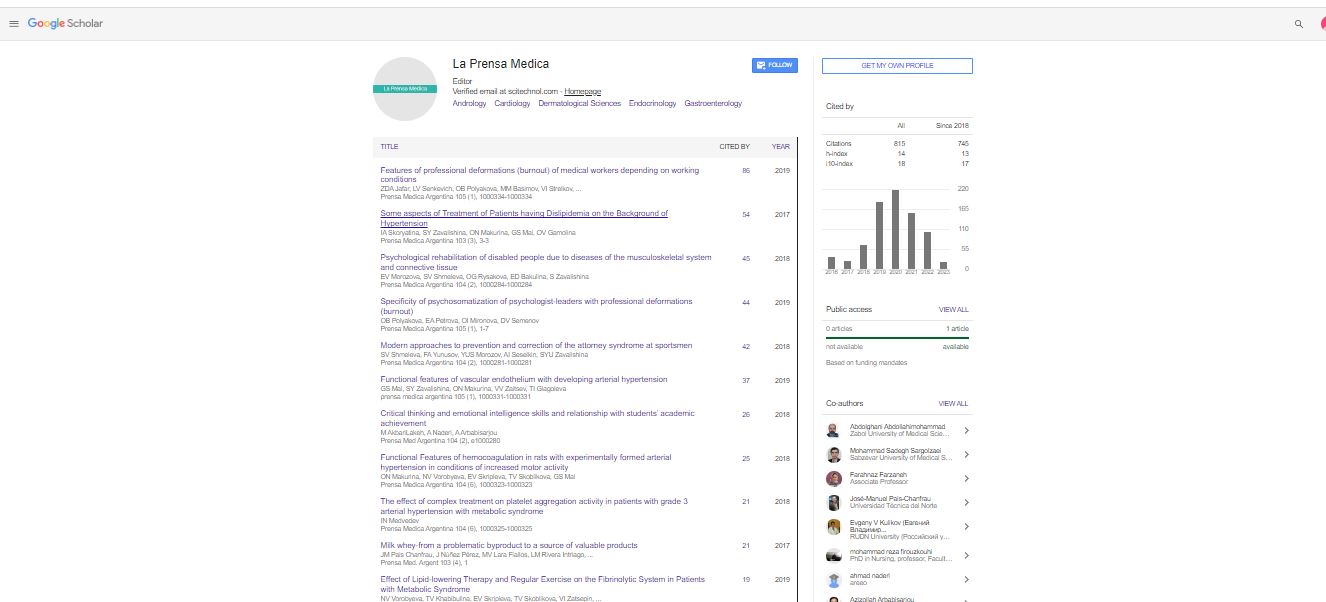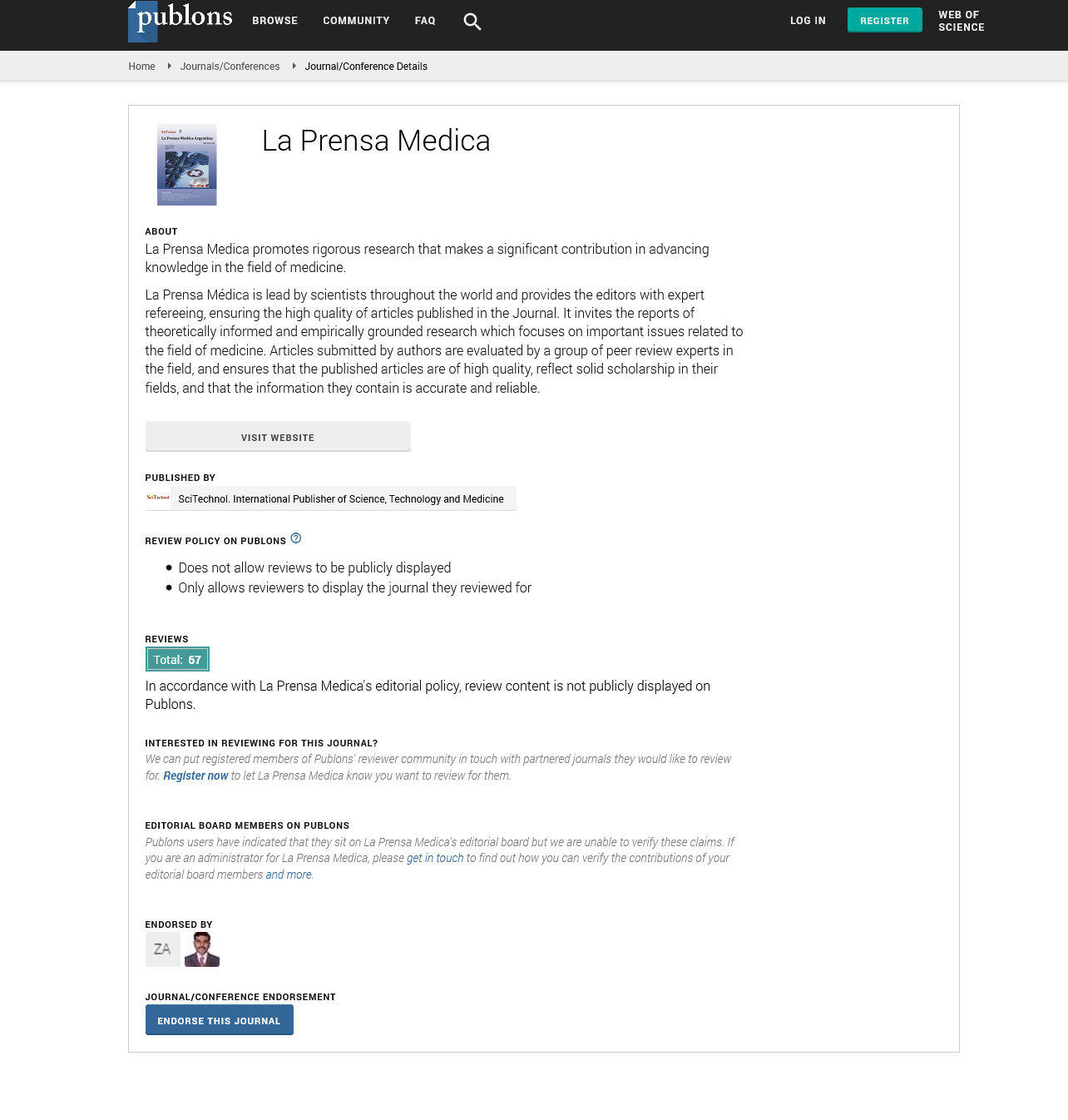Editorial, La Prensa Medica Vol: 107 Issue: 8
Financial stress among skin cancer patients: a cross-sectional review
Lin Zhan
Department of Nursing, University of Memphis, New York, USA
Keywords: Financial stress ,skin cancer
Description
Financial stress among skin cancer patients may limit treatment efficacy by forcing the postponement of care or decreasing adherence to dermatologist recommendations. Limited information is available quantifying the anxiety experienced by skin cancer patients from both healthcare and non-healthcare factors. Therefore, the present study sought to perform a retrospective cross-sectional review of the 2013– 2018 cycles of the National Health Interview Survey(NHIS)to determine the prevalence, at-risk groups, and predictive factors of skin cancer patient financial stress. Survey responses estimated that 11.45%(95% Cl 10.02–12.88%)of skin cancer patients experience problems paying medical bills, 20.34% (95% Cl 18.97–21.71%)of patients worry about the medical costs,13.73% (95% Cl 12.55– 14.91%)of patients worry about housing costs, and 37.48%(95% Cl 35.83–39.14%)of patients worry about money for retirement. Focusing on at-risk groups, black patients, uninsured patients, and patients with low incomes(< 200% poverty level)consistently experienced high rates of financial stress for each of the four measures. Multivariable logistic regression revealed low education, lack of insurance, and low income to be predictive of financial stress. These findings suggest that a considerable proportion of skin cancer patients experience financial stress related to both healthcare and non-healthcare factors. Where possible, the additional intricacy of treating patients at risk of high financial stress may be considered to optimize patient experience and outcomes. The impact of financial stress within the field of dermatology and dermatologic oncology is of particular importance due to the increasing prevalence of skin cancer and the higher amount of out-ofpocket costs these patients may experience. A study analyzing over 9 million new cancer diagnoses between 2000 and 2012 estimated that in the first two years following their diagnosis, 42.4% of patients reported depleting their life savings.These high expenditures can often increase patients’ worries and anxieties, which can further worsen their wellbeing and exacerbate disparities. Since financial stress can limit the effectiveness of clinical treatment greatly, increasing efforts have been made to screen for financial stress factors and align treatment plans to a patient’s situation. Previous research has analyzed the troubling impacts of low socioeconomic status on skin cancer outcome disparities. However, few prior investigations have been able to quantify the potential financial stress reported directly from skin cancer patients, from both healthcare and non-healthcare factors. It is hypothesized that within the skin cancer population a considerable portion of patients experiences financial stress, with factors such as health status, income, and insurance serving as predictors. Therefore, the present study sought to perform a cross-sectional review of the National Health Interview Survey (NHIS) to quantify the prevalence of various financial stress measures among skin of the cancer. This study was conducted across the 2013 to 2018 cycles of the National Health Interview Survey (NHIS), a nationally representative survey conducted annually by the National Center for Health Statistics (NCHS).Using complex sampling design techniques such as stratification and clustering, the NHIS collects estimates of a wide range of health information for the civilian noninstitutionalized population of the United States. With over 600 unique questions included, the NHIS has been employed to analyze health concerns from a patient’s perspective. Since, 2013 the NHIS included financial stress questions about the following topics: “problems paying or unable to pay medical bills, past 12 months”; “worried about the medical costs of health care”;“worried about paying rent/mortgage/housing costs”; “worried about money for retirement”.For the first question about “problems paying or unable to pay medical bills, past 12 months”,responses were structured in a yes/no format. For the remaining three questions about financial worries, responses were structured in a four-step scale indicating the amount of worry:“not worried at all”,“not too worried”,“moderately worried”, or “very worried.
Carcinoma
These repliers from the NHIS were also filtered to only include those who reported having ever been told by a croaker or other health care professional that they had a form of skin cancer (carcinoma ornonmelanoma).Within this subset of cases, only those who completed a response to the forenamed fiscal security questions were included. Eventually, the responses to the four- step scale questions about fiscal worries were also binarized into“not bothered at all”/ “not too upset” and “relatively upset” veritably upset according to former analysis of the NHIS to increase comity for statistical analysis First, this subset of skin cancer cases was also anatomized to see the frequence of fiscal stress enterprises among the population. The overall proportions of the responses were calculated for all four fiscal stress questions, including their 95 confidence intervals. Next, the data was anatomized for any crude differences in fiscal stress responses grounded on the independent variables included in the study. The 95 confidence intervals were calculated for the breakdowns and statistical significance was determined using a Pearson X2 test with the Rao Scott adaptation The unconditional response rate of the check ranged from64.2 to75.7over the study period. The cohort of skin cancer cases who responded to the four check questions—problems paying medical bills, upset about the medical costs, upset about casing costs, and upset about plutocrat for withdrawal—included an aggregate of 5698, 5601, 5605, 5604 cases, independently. The average age for all question cohorts was 65 times old. 96 of repliers in all cohorts werenon-Hispanic white. In addition, 48 of repliers were womanish in all cohorts. To regard for implicit confounding factors, a multivariable analysis was conducted using logistic retrogression while controlling for all the independent variables to prognosticate the fiscal stress responses. From this retrogression, the acclimated odds rates with 95 confidence intervals were calculated and statistical significance was determined using the Wald test. rom those skin cancer cases tried,11.45(95 Cl10.02 –12.88)of repliers reported problems paying medical bills,20.34(95 Cl18.97 –21.71)of repliers reported being bothered about the medical costs,13.73(95 Cl12.55 – 14.91)of repliers reported being bothered about casing costs, and37.48(95 Cl35.83 –39.14)of repliers reported being bothered about plutocrat for withdrawal( Table 2). Fastening on patient groups, black cases, uninsured cases, and cases with income< 200 poverty position endured high rates of fiscal stress for each of the four measures.
 Spanish
Spanish  Chinese
Chinese  Russian
Russian  German
German  French
French  Japanese
Japanese  Portuguese
Portuguese  Hindi
Hindi 

